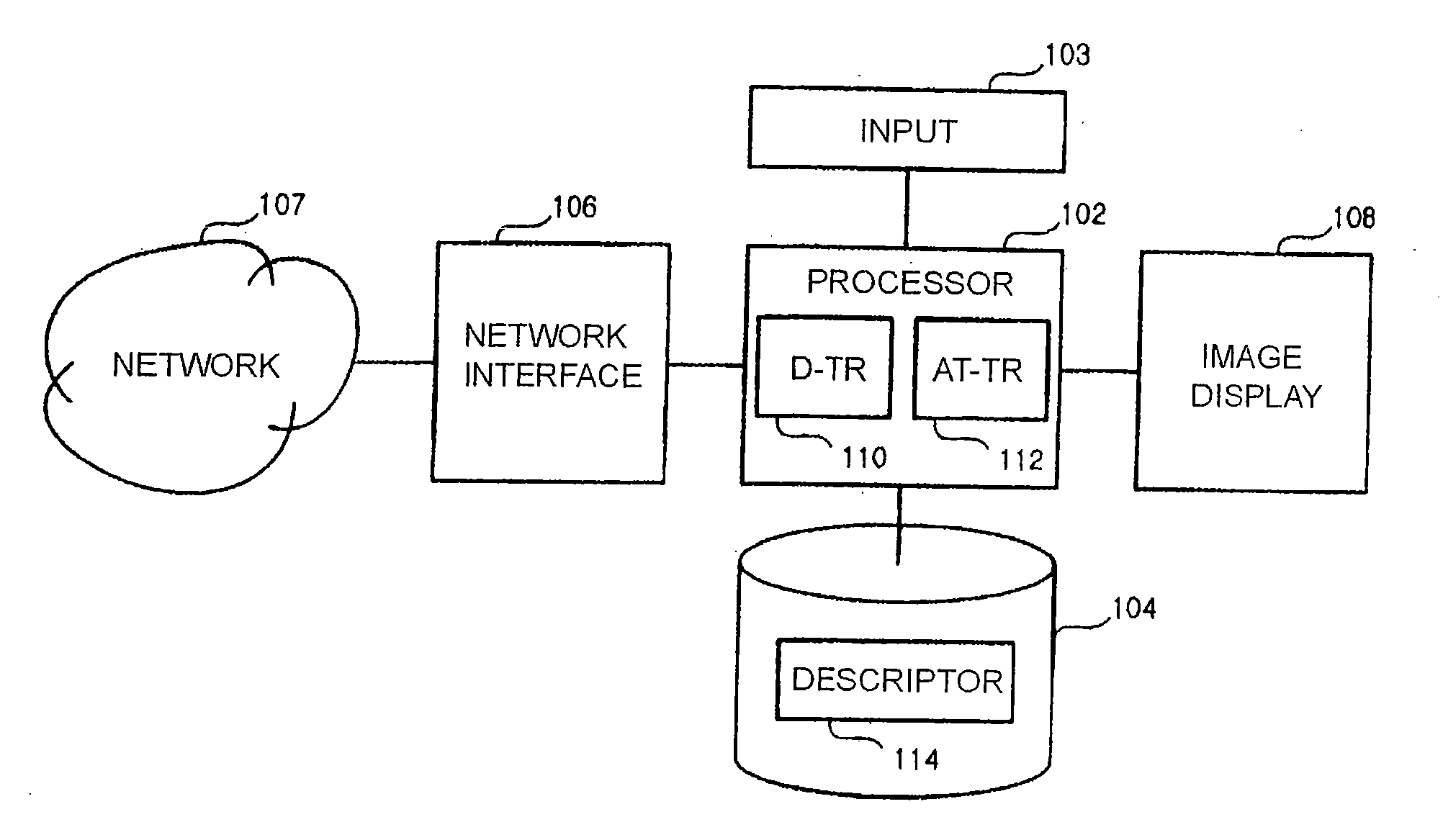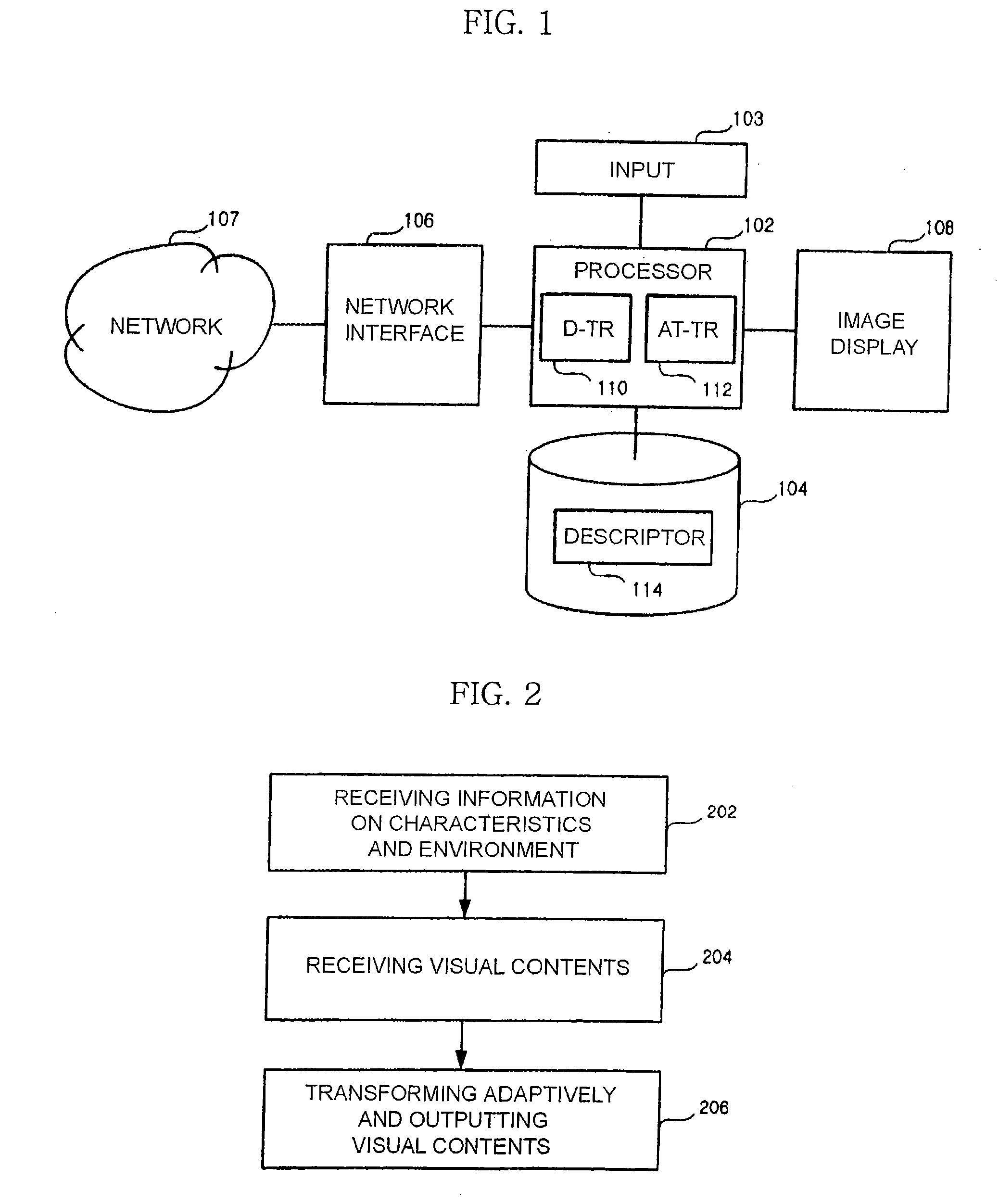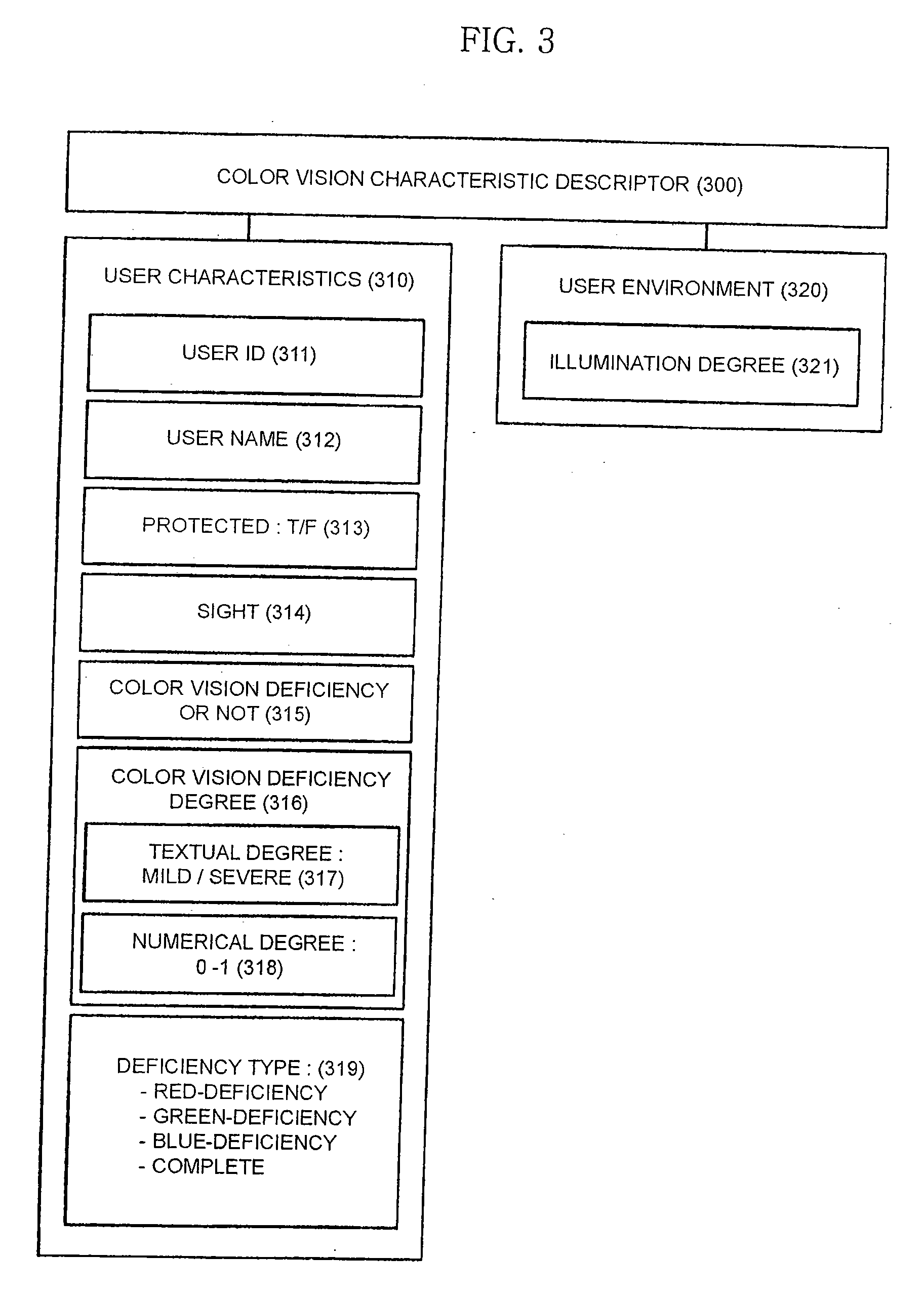Method and system for transforming adaptively visual contents according to terminal user's color vision characteristics
a terminal user and color vision technology, applied in the field of methods and systems for transforming visual contents, can solve the problems of restricting the creativity of manufacturers, limiting the application of color vision deficiency, and the algorithm capable of simulating color vision characteristics, so as to achieve free and convenient use of multimedia contents
- Summary
- Abstract
- Description
- Claims
- Application Information
AI Technical Summary
Benefits of technology
Problems solved by technology
Method used
Image
Examples
Embodiment Construction
[0040]Hereinbelow, the present invention will be described in detail with reference to the accompanying drawings. For the purpose of consistency in description, like reference numerals are used to indicate like components and signals in the drawings.
[0041]FIG. 1 is a block diagram of an adaptation system in accordance with an embodiment of the present invention. FIG. 2 is a flowchart of the adaptation method in accordance with the present invention, in which the adaptation is a processing step that is specifically executed in a processing section 102 shown in FIG. 1. As shown in FIG. 1, an adaptation system 100 is implemented to include a processing section 102, an input section 103, a database 104, a network interface 106, and an image display device 108. The processing section 102 comprises a dichromacy adaptation section 110 and an anomalous trichromacy adaptation section 112.
[0042]The user inputs the user own information on color vision characteristics and environment to the pro...
PUM
 Login to View More
Login to View More Abstract
Description
Claims
Application Information
 Login to View More
Login to View More - R&D
- Intellectual Property
- Life Sciences
- Materials
- Tech Scout
- Unparalleled Data Quality
- Higher Quality Content
- 60% Fewer Hallucinations
Browse by: Latest US Patents, China's latest patents, Technical Efficacy Thesaurus, Application Domain, Technology Topic, Popular Technical Reports.
© 2025 PatSnap. All rights reserved.Legal|Privacy policy|Modern Slavery Act Transparency Statement|Sitemap|About US| Contact US: help@patsnap.com



